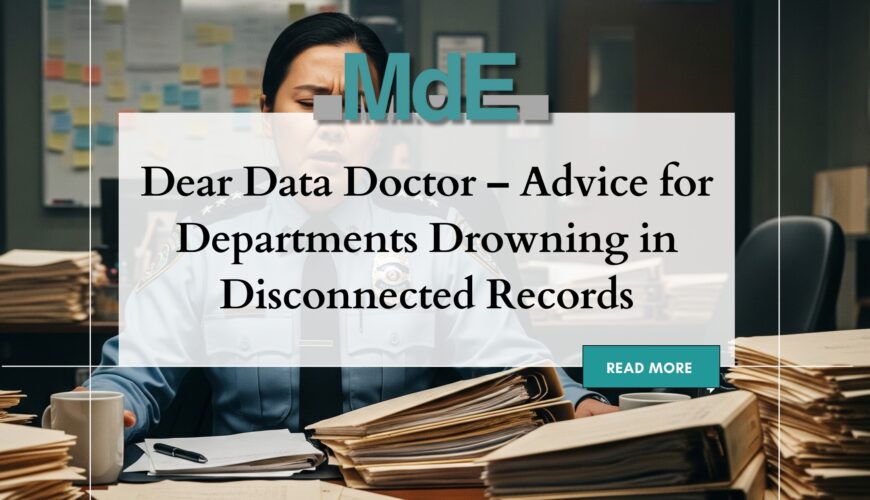Dear Data Doctor,
I’m at my breaking point. Between training schedules, personnel files, equipment logs, and compliance reports, I feel like I’m drowning in spreadsheets and paper trails. Dispatch can’t track certifications. Firefighters are sharing gear because no one knows who has what. Our corrections team keeps missing audit deadlines because records are buried in filing cabinets. And don’t even get me started on trying to share information between divisions—it’s chaos. How can we possibly keep up?
— Drowning in Data
Dear Drowning,
You’re not alone—far from it. Every corner of public safety is facing the same struggle: too much information, spread across too many disconnected systems. It’s not that your staff isn’t working hard. It’s that you’re asking them to juggle with one hand tied behind their back.
I’ve seen the scene you describe too many times: a dispatcher frantically clicking through folders to confirm a certification before the shift starts… a fire captain with a clipboard, cross-checking who’s cleared on equipment before heading out on a call… a jail supervisor flipping through binders at the eleventh hour to prepare for an audit. It’s exhausting—and mistakes are almost guaranteed.
Now imagine this instead: one secure, centralized system where every record lives together. Training certifications, personnel files, equipment assignments, Internal Affairs investigations—it’s all connected. A dispatcher sees at a glance who’s certified. A fire chief gets an automatic alert when a piece of gear needs service. A corrections supervisor generates an audit-ready report in minutes instead of weeks. Suddenly, the stress shifts from “barely surviving” to “actually thriving.”
And here’s the secret weapon: automation. Instead of chasing down deadlines, the system chases them for you. It pings you when a certification is about to expire, when equipment is due for inspection, or when an investigation needs attention. No more sticky notes on monitors or late-night scrambles. The software keeps watch so your people can focus on the job that really matters—keeping communities safe.
I’ve worked with departments that told me the same story you just shared. They were reactive, constantly putting out administrative fires. But once they centralized their records, they became proactive. Officers knew their training was up to date. Dispatchers had confidence in their rosters. Firefighters trusted their gear. Jail staff walked into audits without breaking a sweat.
The real gift isn’t just organization—it’s peace of mind. When your people know the records are accurate, accessible, and secure, morale goes up. Leaders gain clarity. And the whole department moves with more confidence.
So, Drowning in Data, here’s my prescription: stop letting scattered systems call the shots. Find one platform that ties it all together. Integration, automation, and real-time visibility aren’t just buzzwords—they’re lifelines.
Trust me, it’s not a dream. Departments across the country are already doing it. You can too.
— The Data Doctor


